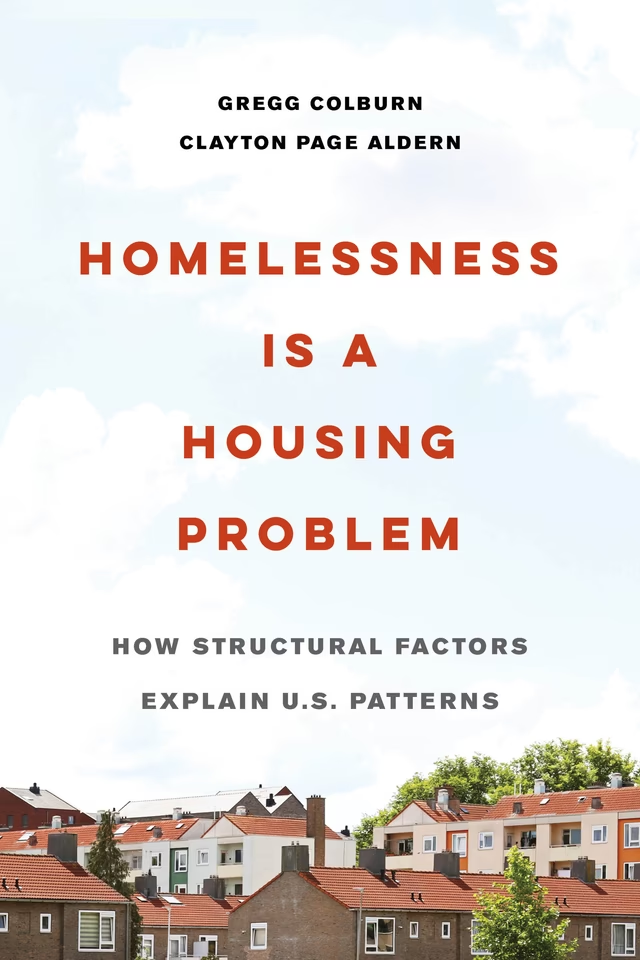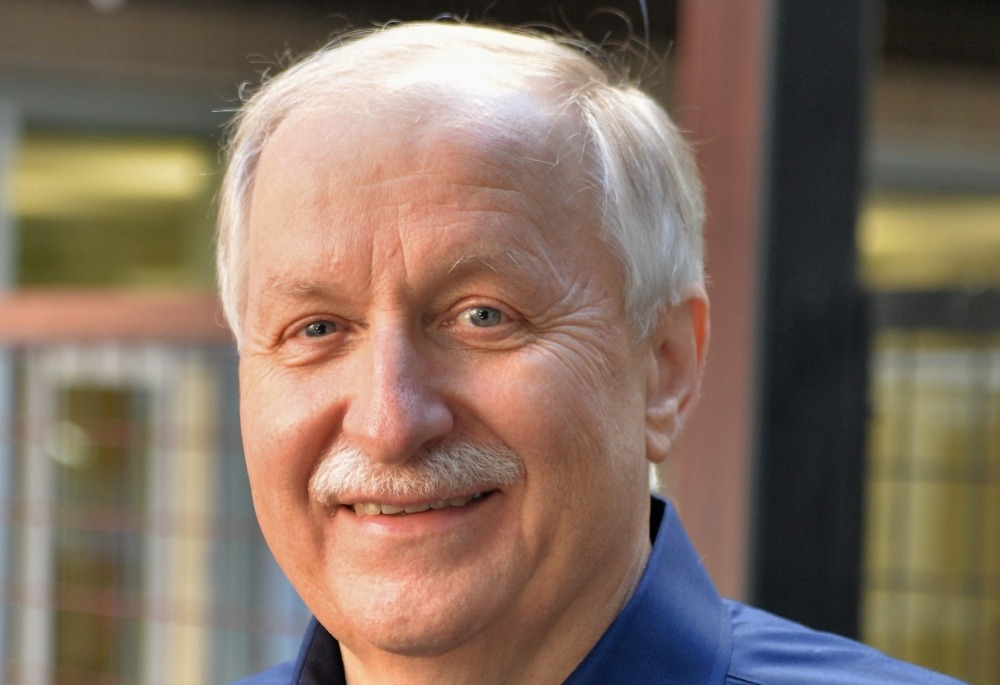Creating housing for America’s low-income families has steadily fallen behind the need since the Reagan Administration cutbacks in HUD funds, followed in the 1990s by the near complete end of federal funds for construction.
Add to that the staggering increase in rents, climbing right along with the cost of buying. And the result, as we’ve become frustratingly aware, is a heart-rending surge in homelessness: tent encampments along streets and in parks, clusters of mostly run-down RVs in industrial areas, people sick, drugged, and too often dying because of a new poison called fentanyl.
But those symptoms – from which you want to turn away or wish away – are just that, symptoms. The cause of homelessness is a lack of housing – clearly established in the book Homelessness is a Housing Problem, by UW professor Gregg Colburn.

It comes down to that. We need more housing that’s affordable to people below the median income – the lower half and especially the lower third of earners.
For the past several years, that fundamental truth has been obscured by the promotion of the King County Regional Homelessness Authority (KCRHA). It’s an agency – a huge public effort – assembled and sold as a solution to the problem. But however much help the agency and its non-profit service contractors could provide in referrals for medical help, drug treatment and employment, when it comes to getting people into safe, secure and hopefully permanent housing, the KCRHA was and is entirely dependent on government and non-profit housing providers. The agency charter prevents it from buying or owning real estate.
Early on, as federal housing funds nearly evaporated, local governments stepped in. Even though the federally supported Seattle Housing Authority owns and manages 8,500 units, plus about 3,500 units in partnerships with other agencies and roughly 3,500 federally funded Housing Choice Vouchers, more housing is needed.
Under Mayor Norm Rice, Seattle voters approved a Low-Income Housing Levy in 1986 and have renewed it every six years since, producing in that time 11,000 government-owned or supported apartments and more than 1,000 homes for qualified families. Similarly, with tax money, the King County Housing Authority (not to be confused with the KCRHA) has created and operates wholly or in partnerships almost 12,500 apartments. And it provides about 13,000 Housing Choice (Section 8) vouchers. One result, according to KCHA, is that 23,000 children have homes in KCHA facilities. Growing along with city and county efforts, there are now more than a dozen well-established non-profits, some today managing as many as 3,000 units for low-income renters.
In the 1990s and early 2000s, the focus of these government and non-profit agencies was, first, low-income seniors, then low-income families, and often people with disabilities that limited their earning power. Most could be housed, and the truly homeless were few enough that charities and non-profit agencies offering congregate shelter were sufficient to provide them places off the streets.
But in the last 25 years, as the homelessness problem steadily grew, it became obvious that increasing housing production – many more low-income apartments and houses, too – is the only meaningful path to getting people permanently out of tents and doorways.
The need for more low-income housing has been a passion for Frank Chopp since 1983, when he began serving as Executive Director of the Fremont Public Association (now known as Solid Ground). Following that passion, Chopp has been the 43rd District state representative since 1995. And for 20 years (1999-2019) he was speaker of the Washington State House of Representative. Over the years – and increasingly as the homelessness problem worsened – Chopp has used his legislative power –and since 2018 with an outside government organization he established – Chopp has pushed for and facilitated the creation of more low-income housing.
That effort, Home and Hope, is “a catalyst for creating housing, education and community facilities on public and non-profit land,” according to a four-page write-up Chopp hands out. Not fancy. It’s printed from a computer file onto office paper. Still, the first page has a color photo of The Rise on Madison/The Blake House, a new building at Madison and Boylston on Seattle’s First Hill with 362 units in two parts: 120 units for formerly homeless, many more for low-income “workforce” renters.
The last page of Chopp’s handout is probably the most impressive. It’s the score card of accomplishments and future commitments for which Home and Hope has been a catalyst. The list looks like this: 938 unites completed, 2,949 units in development, and nearly another 3,000 in the pipeline. “In the pipeline” might seem somewhat speculative, except for one thing Chopp has really brought to the table. There is property in hand for all of them.
Five or six years ago, about the time Chopp was launching Home and Hope, he organized efforts to locate public properties that could be used or repurposed for public or non-profit housing. “If you have the land, all else will follow,” he says.
Over the past few years, with Chopp’s leadership, the legislature has enacted laws requiring Sound Transit to transfer surplus property and air rights above transit stations to non-profit organizations and public agencies, at no cost, for affordable housing and community facilities. He also has partnered with King County Executive Dow Constantine, who leads the Sound Transit Board. You can see the result at Cedar Crossing, 245 units developed by Mercy Housing and Bellwether Housing built on Sound Transit land and air rights at the Roosevelt station on Roosevelt Way NE in Seattle. The Rise on Madison/Blake House, was built on property Sound Transit acquired for its never-built First Hill station.
More Sound Transit property –at Angle Lake (130 units by Mercy Housing and the Arc of King County), at Kent-Des Moines North (200 units by Open Doors and Mercy Housing) and Overlake (333 units by Bellwether Housing) –is already in development. Other Sound Transit properties in the pipeline include surplus or air rights properties at the Spring District station in Bellevue –where the new Eastside light rail line has just opened –and at the Lynnwood and Kent-Des Moines South station properties.
In all, there are more than 15 non-profit property owners and managers involved, where Home and Hope has played a leading role. In many cases, Home and Hope also helps round up the money that non-profit developers need to start construction. As part of the project, Home and Hope can also raise and distribute money thanks to an alliance with Enterprise Community Partners, Inc., which serves as fiscal agent. A 42-year-old national non-profit, Enterprise in that time has aggregated and invested $72 billion in the creation of 1 million homes. From the outset, Chopp saw them as an important partner.
Land is essential but creating low-income housing also takes money, lots of it. Chopp’s Home and Hope handout lists eight new or amended laws providing money for public housing. Among the largest is a recent expansion of the State Housing Trust Fund to $500 million for this biennium. It’s a key source that the non-profit housing developers apply for as they put together funding packages for their projects. Another is Apple Health and Homes, which created a $160 million fund for housing projects designed to serve those with serious medical conditions.
Land and money. Here’s how Home and Hope describes its ambitions on the Chopp handout: “Re-purpose surplus or under-utilized public and non-profit properties, acquired at no or low cost, for co-location of housing and other facilities for public priorities like early learning centers and community health clinics.”
Along with this essential goal, there’s one that Chopp holds dear: “Require non-profit or public ownership, ensuring lower rents and costs on a permanent basis.”
Discover more from Post Alley
Subscribe to get the latest posts sent to your email.

We certainly know about how challenging it is for non profits to build or acquire more units. Competition for Limited funding sources, labor and supply costs along with lengthy planning and permitting processes are part of the complex picture. . Once completed, these buildings become public assets that must be maintained. Rent payments are necessary to continue to operate. When will someone pull back the curtain on the Housing Justice Project that has made it as next to impossible for any non profit housing provider to evict a dangerous, destructive non paying tenant as it is for any private landlord? The agencies are not able to provide a safe environment for their tenants and staff. The agencies are not able to collect enough rent to cover operational costs. Seattle is the only city that has an Amazon Tax Account that can be raided and the money purported to be for new construction can be redirected to local agencies for their daily operations. Other cities do not have that luxury. Soda taxes, surcharges and fees, and more and more increased levies that can be redirected to bailouts or obscene rental assistance awards is not sustainable. Private owners are becoming more reluctant to accept Section 8 vouchers because SHA and KCHA cannot help when a landlord ends up with a bad tenant. The over whelming majority of Section 8 voucher holders are great tenants but once a landlord gets burned, they will drop out of the program. When will SHA and KCHA and all the other non profit housing providers speak up? What are they afraid of?
The author claims that a lack of housing causes drug addiction. By this logic, if there is sufficient housing, then there would be no drug problem. Where is the evidence to support this causal relationship? It seems more likely that drug addiction leads to decisions that make it difficult for individuals to maintain their housing.
The author also argues that housing is expensive and that we need more of it. If we assume the annual cost for housing and wraparound services for each homeless person is $100,000, and 1% of the population is homeless, each non-homeless person (not tax payer) would need to contribute approximately $1,000 per year. That’s a significant contribution from everyone who isn’t homeless. If the homeless population were 10%, the cost would rise to $10,000 per year per non-homeless person (not taxpayer). Who can afford an extra $1000, much less 10,000 annually to house others?
You should read the book mentioned in the piece. Lots of people who do drugs never become homeless, and there are areas of the country that have a serious drug problem and don’t have a high rate of homelessness. Also, lots of people who are homeless don’t need wrap around care or lots of supportive services- they just need help affording the very high cost of getting into and paying rent for an apartment.
An excellent summary of the long term housing initiatives supported by the former Speaker. It has been and remains a long haul which often seemed like trying to get down while trapped on an up escalator of need and costs. One day we will look back to see that the fentanyl epidemic and our inability to assemble a statewide mental health system might ultimately be recognized as the cause of our most expensive public program.
My only nit is the last paragraph: “Require non-profit or public ownership, ensuring lower rents and costs on a permanent basis.” I have argued for permanent land easements for affordable units for years. As far as I know, there are essentially none. The good will of agencies and nonprofits is laudable. But we can’t keep buying and building every 20 to 50 years. Permanent (but transferable) easements are needed to capture the investment of public capital.